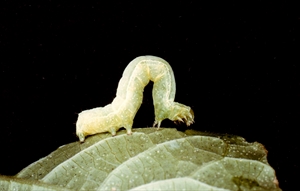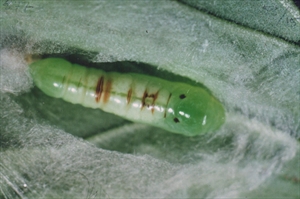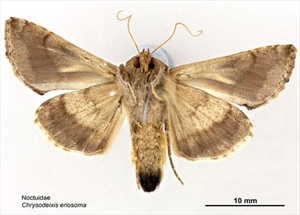Chrysodeixis eriosoma; the identification of this moth in the Pacific may have been confused with a similar ('sister') moth, Chrysodeixis chalcites, which in Fiji is listed by Swaine (1971)1 as Plusia chalcites. However, CABI (2014) lists no records of Chrysodeixis chalcites in the Pacific islands (it is in Australia and New Zealand), and quotes (Zang 1994): "Literature referring to C. chalcites (= chalcytes) in southern or eastern Asia or Oceania actually refers to C. eriosoma". However, the SPC surveys of Federated States of Micronesia and Palau record Chrysodeixis chalcites in Palau and the Northern Mariana Islands2.According to the entry in Wikipedia, the two species cannot be separated morphologically, but they can be separated based on DNA, response to pheromones and distribution. These moths are member of the Noctuidae.








